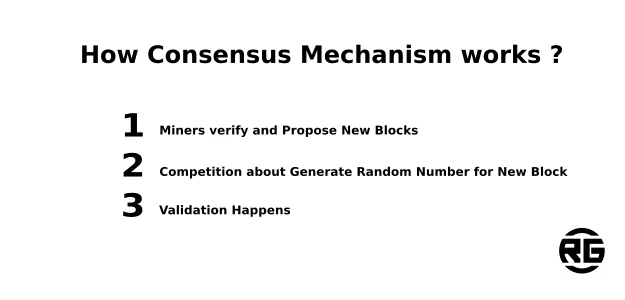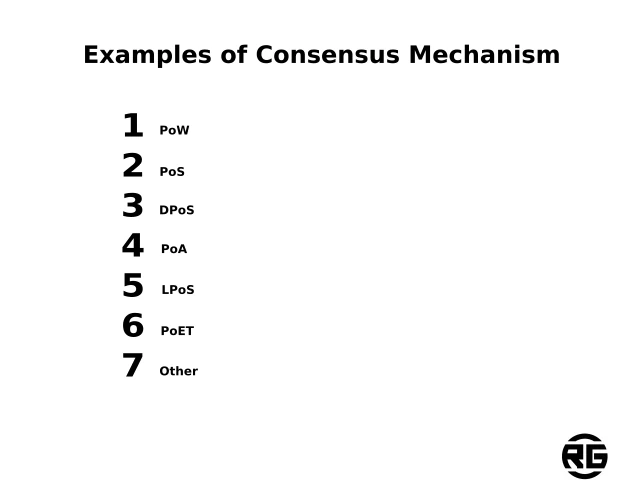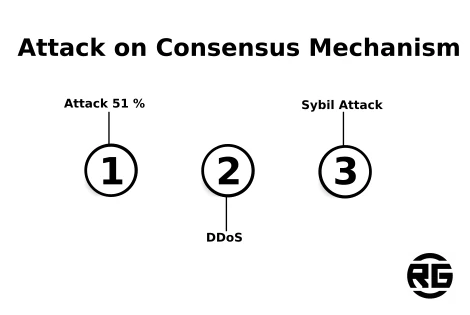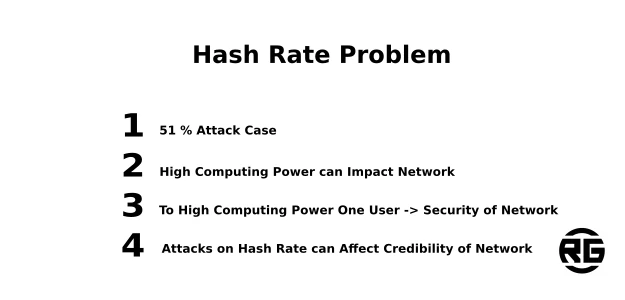What is Consensus Mechanism ?
What is consensus mechanism? This is a mechanism that is responsible for the security of the cryptocurrency network. Thanks to it, the authenticity of transactions takes This is crucial in maintaining security.
How Does the Consensus Mechanism Work?
In the case of Proof-of-Work, blockchains like Bitcoin, consensus requires a significant amount of energy, hardware, and computing power, indeed. What’s more, all for propose a new group of transactions – called a block – to the ledger.
The nodes that verify transactions and propose new blocks are miners, as well. Furthermore, miners compete to generate a random number to unlock the next block in the chain. The miner who reaches this number the fastest adds another block and receives a block reward for their effort.
The only way to win is to generate random numbers as soon as possible and get lucky. It’s a competition for computing power, which in turn requires hardware and electricity.
When it comes to Proof-of-Stake blockchains, the nodes – often referred to as validators – that validate transactions. They propose new blocks to lock in some value. All of that in the form of a native blockchain token – that’s their stake in the system.
The more value a validator contributes, so more likely it is to propose a new block and win a block reward. If a validator makes a mistake, then they must pay a fee or may be excluded from validation.
A bit complicated, but not such a terrible wolf as he is painted.
Let’s look at examples of the use of the mechanism.

As simple as possible to say, so the consensus mechanism is the process of generating subsequent blocks in the blockchain.
Examples of Consensus Mechanism
Proof-of-Work (PoW) – Bitcoin, Ethereum Classic
The first example is PoW. PoW as Proof-of-Work is a system that uses hard-to-calculate, but easy-to-verify features.
All of that for limit the benefits of cryptocurrency mining.
Idea of the Proof-of-Work concept was developing to prevent cyberattacks such as DDoS (Distributed Denial of Service). A DDoS attack is when a device. Such as a computer, gets compromised and fills up with traffic.
As a consequence the system to become overloaded and thus exhausted and disabled.
Proof-of-Stake (PoS) – Ethereum
Then describe PoS. Firstly, we need to know what is staking.
Secondly, in crypto terms, the stake is the cryptocurrency that the user owns and commits to taking part in validation.
Obviously, Proof-of-Stake (PoS) is a type of consensus mechanism. In this consensus users of a blockchain-based network must wager a certain portion of their coins. They can use a tokens as well to have a chance of verifying transactions on the block.
When a user is the one to approve a block and can verify all transactions in that block. Then they are gaining with a certain amount of cryptocurrency for their work.
PoS is comparable to a Proof-of-Work (PoW) algorithm because they both need their network participants (or validation nodes) to reach a distributed consensus.
Many crypto coins want to switch to the Proof-of-Stake system. It is much more centraly managed and energy efficient in the long run. Thus it is very attractive to new investors with a newer concept.
Delegated-Proof-of-Stake (DPoS) – TRON, Solana
It’s time to describe the modified version of PoS – DPoS. DPoS-based blockchain counts with a voting system.
Stakeholders extend their work to a third party. Put simply, they can vote for a few delegates to secure the network on their behalf.
Delegates can also be appointed as witnesses and are responsible for reaching a consensus. When generating and approving new blocks.
The voting power is equal to the number of coins owned by each user. The voting system varies from project to project, but generally, each delegate makes an individual proposal, asking for a vote.
Often, the rewards collected by delegates are proportionally divided among their constituents.
Therefore, the DPoS algorithm builds a voting system that is directly dependent on the reputation of the delegates.
If a voted node misbehaves or does not function properly, it will be quickly removed and replaced with another.
When it comes to performance, DPoS blockchains are more scalable and can process more transactions per second compared to PoW and PoS.
Proof-of-Authority (PoA) – VeChain
But that’s not the end. Another example is PoA. Proof of Authority is system, where nodes in the network are selected. They are selected to validate transactions based on their identity or authority.
This mechanism is faster and more efficient than other consensus mechanisms, but it is less decentralized and can be vulnerable to collusion among the validators.
Each of these consensus mechanisms has its own advantages and disadvantages, and the choice of mechanism will depend on the specific needs and goals of the blockchain network.
Some blockchain networks may even use a combination of different consensus mechanisms to achieve a balance between security, decentralization, and efficiency.
Leased-Proof-of-Stake (LPoS) – Waves
Another modification of PoS is LPoS. LPoS is an advanced version of the Proof-of-Stake (PoS) algorithm. In general, in the Proof-of-Stake algorithm, each node stores a certain amount of cryptocurrency. It’s suitable for adding another block to the blockchain.
However, with Leased Proof-of-Stake, users can lease their balance to full nodes. The higher the leased amount, the better the chances are that a full node will be selected to produce the next block. If a node is selected, the user will receive a portion of the transaction fees that are charged by the node.
Proof-of-Elapsed-Time (PoET) – Hyperledger
Finally, I will describe PoET. PoET is a consensus mechanism algorithm that is often used in authorized blockchain networks. All for determine mining rights or winners of blocks on the network.
Allowed blockchain networks are those that require any potential user to identify themselves before being able to join them. Based on the principle of a fair lottery system where every node has an equal chance of winning, the PoET mechanism is based on equitably spreading the odds of winning among as many network users as possible.
The timer is different for each node. Each user in the network has a random wait time. The first user to finish the wait can commit to the next block on the blockchain.
Other
There are several other consensus mechanisms, but due to their lesser prevalence, I have omitted to list them.

As you can see, there are many modified forms of PoS, but no PoW modifications. I guess that means something. Don’t you think so?
Why is it so Important?
The consensus mechanism is very important for transaction verification management.
Due to the lack of a master host managing transactions, the responsibility falls to the nodes there.
In a blockchain network, there may be a situation where a node tries to spend money twice.
Once the money is spent, the cryptocurrency changes its owner.
A dishonest user in the network may try to make a purchase transaction and then send the same cryptocurrencies to the exchange (to withdraw them).
Nodes confirm the first transaction between two users (buy-sell).
The seller cannot use the same cryptocurrencies to withdraw cryptocurrency.
The nodes confirm the first transaction and disallow the second. Fraud will not be done by validation.
Attacks on a Consensus Mechanism
Attack 51 %
The 51% attack is a technique that occurs when the attacker has 51% of the hash power. This attack starts with the private creation of a blockchain that is completely isolated from the real version of the blockchain.
At a later stage, this chain is presented to the network to join as a real chain. This is what makes the double-spend attack possible.
Since the blockchain policy follows the principle of the longest chain, if attackers can obtain 51% hash power or more, they will be able to control the longest chain, convincing network nodes to follow their chain.
However, achieving 51% mixing power is not strictly necessary; if the attackers get less than half the hash power, a double-spend attack is still possible, but with a lower probability of success. The more computing power the entire blockchain network contains, the more costly an attack becomes.
Therefore, you can be sure that cryptocurrencies with high network hashing are more secure against a 51% attack.
DDoS
DDoS is a type of cyberattack where resources are inaccessible to network. Their participants by flooding them with extreme traffic in a distributed manner. This attack is out over the past two decades to damage various networks.
Research shows that the impact of DDoS attacks is increasing, costing enterprises an average of more than $2 million per attack. DDoS is one of the most common attacks on the blockchain network. Attackers to hinder genuine transactions so that invalid transactions can be performed.
However, due to the decentralized nature of the blockchain, DDoS can only limit network activity to a certain level.
Sybil Attack
The Sybil attack aims to damage P2P networks by creating several fake identities. Attackers can establish several fake nodes that appear to be genuine to their peers. Fake nodes are involved in corrupting the network to validate unauthorized transactions and alter legitimate transactions.
They can use several devices, virtual machines, or Internet Protocol (IP) addresses as fake attack nodes. A P2P network assumes that each participating node contains only one identity.
Therefore, a few fake nodes allow attackers to reject the transmitted blocks and outvote honest nodes.
However, there are a large number of nodes in the bitcoin blockchain network, which results in very high attack costs.

Surely, consensus mechanism can be attacked in many ways. Almost all of the security mechanisms are vulnerable on DDoS and 51 % attack, indeed.
Weaknesses of the Consensus Mechanism and Defense
It is impossible to discuss all the weaknesses of the consensus mechanism due to their number.
I will refer to the 2 most popular ones: PoW and PoS.
Blockchain security reports show that Proof-of-Work and Proof-of-Stake consensus networks are vulnerable to 51%, DDoS and Sybil attacks.
Protection Against Attacks
51% attack
a) high hash rate
b) mining network monitoring
DDos
a) firewalls and intrusion detection systems
b) antivirus and antimalware software
c) network segmentation into subnets
Sybil’s attack
a) check if nodes only transfer blocks to one user
b) monitor blockchain network
Hash Rate Problem
An attacker with high computing power could cause a severe impact on the blockchain network. A 51% attack occurs because of a majority hash and can be catastrophic on a blockchain network.
It is worth paying attention to the computing power of the cryptocurrency network of the cryptocurrency we are into in. This is part of network security.
Effectively carried out attacks can significantly affect the credibility of the network, and change the number of its users and the investor’s ROI.
Look at the hash rate data when you invest or want to stay a miner.

Particularly, the 51% attack comes down to taking control of the hash rating power.
When Can We Talk About Full Blockchain Security?
Unfortunately, at the moment, it cannot be fully stated that blockchain networks are not vulnerable to network attacks. Over time, the sophistication of the network will reduce the likelihood of attacks and minimize their costs.
It may also come to a point where the cost of the attack will be so high that it is unprofitable.
Due to the dangers of attacks on blockchain networks, it is good to keep your cryptocurrencies out of the network as well as the exchange.
Conclusions
The assumption of having the majority of honest miners on the blockchain network has been underestimated. As a result take place practical 51% attacks on various cryptocurrencies.
This encourages attackers to perform a 51% attack.
The PoW consensus protocol, like other consensus protocols, contains serious security risks and
does not protect against the 51% attack.
Weaknesses that allow 51% of attacks to be exploited are based on the ability to mix mining pools.
With the increase in the number of users and the sophistication of the network, the costs of carrying out 51% of attacks are very high.
Cryptocurrencies at an early stage of development are subject to these attacks because their mining power is at relatively low levels.

Leave a Reply
You must be logged in to post a comment.